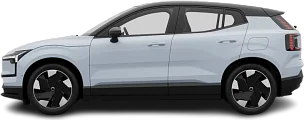Electric Car Battery Guide. All You Need to Know

Electric cars are becoming increasingly popular, but many drivers still have questions about their batteries. How do they work? How long do they last? How can I get the most out of them? This guide will provide clear and concise answers to help you become a battery expert.
Table of Contents
Understanding How EV Batteries Work
Think of an electric car battery as a big, advanced power bank.
Although it doesn't look like the battery in your smartphone, it operates on the same basic principle: storing and releasing energy.
Inside the battery pack are many smaller cells. Each cell has a positive side (cathode) and a negative side (anode), separated by a special material. When you drive, these cells work together to produce electricity, which powers the car’s motor.
Here's a simpler way to imagine it: when you use the battery, tiny particles called ions move fr om one side of the cell to the other, creating an electric current. This current flows through the car's system, making it run. When you plug in to charge, the process reverses: electricity flows back into the battery, replenishing the cells for your next trip.
Nominal vs. Usable Capacity
Imagine your battery is a gas tank for electricity. Battery capacity is how much electricity it can hold, measured in kilowatt-hours (kWh), just like a gas tank size in gallons (or liters).
But here's the thing: car companies typically list a nominal (gross) capacity, which is the total amount of energy that a battery can theoretically hold. However, in actual use, some of this energy is reserved for system management and safety reasons — to protect the battery and keep it healthy for a longer life. It's like always leaving a reserve in the gas tank you can't use.
Usable (net) capacity, which is generally about 95% of the nominal capacity, represents the actual amount of energy available to power your car. In other words, the usable capacity is always lower than the nominal capacity, but it's the number that matters more for how far your electric car can go on a single charge. A larger difference between nominal and usable capacity means a smaller usable portion of the battery, but also extends its lifespan.
Types of Electric Vehicle Batteries
Electric vehicles use different types of batteries, each with its own strengths and weaknesses. Let's break down the most common ones:
Lithium Iron Phosphate (LFP)
Becoming increasingly popular due to their safety and lower cost, LFP batteries use iron and phosphate instead of rare, expensive metals. While they generally have lower energy density compared to nickel-based batteries, they are less prone to catching fire and offer a longer lifespan.
Examples: Tesla Model 3 and Tesla Model Y (RWD trims), BYD Dolphin and BYD Seal, GWM Ora
Lithium Nickel Manganese Cobalt (NMC)
Striking a balance between energy density and cost, Lithium Nickel Manganese Cobalt (NMC) batteries offer a compelling option for many electric vehicles. They generally provide a longer driving range than LFP batteries while remaining relatively affordable. Nevertheless, NMC batteries are susceptible to degradation over time and may pose higher safety risks.
Examples: BMW iX3, Volvo EX30, Nissan Leaf, Chevrolet Bolt, Tesla Model Y (AWD trims), Tesla Model 3 (AWD trims), Polestar 2
Lithium Nickel Cobalt Aluminum Oxide (NCA)
Prioritizing maximum range, Lithium Nickel Cobalt Aluminum Oxide (NCA) batteries deliver high energy density. However, this comes at the expense of increased cost and potential safety risks. Due to these factors, NCA batteries have become less prevalent in the automotive industry.
Examples (Less Common): High-performance versions of the Model S and Model X
Lithium Titanate Oxide (LTO)
Characterized by exceptional lifespan and rapid charging capabilities, Lithium Titanate Oxide (LTO) batteries excel in applications demanding frequent charging cycles and high burst power. Unfortunately, their significantly lower energy density and high cost limits their suitability for mainstream electric cars.
Examples (Less Comon): Mitsubishi i-MiEV, Honda Fit EV, some electric buses
Battery Behavior in Extreme Conditions
Extreme temperatures can have a significant impact on the performance and range of electric vehicle batteries. Here's a deeper look at how these conditions affect the battery:
Hot Weather
High temperatures can accelerate battery degradation, which means the battery loses its ability to hold charge over time. This can lead to a noticeable reduction in the operating range. In addition, extreme heat can strain the internal components of the battery and affect its overall life.
Cold Weather
Cold temperatures can lim it the battery's ability to supply power. This can manifest as reduced driving range and reduced performance of functions such as acceleration. In very cold weather, the battery may struggle to generate enough power to start the car or maintain optimal performance.
Battery Thermal Management
Modern electric vehicles use sophisticated battery management systems (BMS) to manage temperature extremes. These systems regulate battery temperature by circulating coolant through the battery pack to prevent overheating. In cold conditions, the BMS can use grid electricity (if plugged in) or the battery's energy to preheat the battery, ensuring optimal performance.
5 Tips to Maximize Battery Life
Contrary to popular belief, electric vehicle batteries do not simply fail after a certain point. Degradation is a gradual process, typically averaging just one to two percent range loss per year. Encouragingly, most batteries are engineered to outlast the vehicle itself.
Here are some simple but effective tips to help your electric vehicle battery last longer:
- Avoid full charging and discharging: For optimal battery longevity, focus on shallow charging cycles. Avoid routinely reaching 100% charge or letting the battery fall critically low. Maintain a charge level between 20% and 80% for everyday driving to minimize degradation.
- Minimize DC fast charging: Prioritize charging at home with a slower AC charger whenever possible. This reduces stress on the battery compared to DC fast charging.
- Park at moderate temperatures: To prolong battery life, consider parking your electric vehicle in shaded areas or cool garages during hot weather. In colder climates, parking in sunny locations or warm garages can help maintain optimal battery temperature.
- Manage climate control: Excessive use of heating or air conditioning can drain your battery. Whenever possible, pre-condition your car's cabin temperature while plugged in to avoid draining the battery while driving.
- Do not keep the car plugged in at all times: Once fully charged, unplug the car to avoid unnecessary strain on the battery.
By understanding these key points and following these simple tips, you can ensure that your electric car battery can provide optimal performance and long life for years to come.












Discussion